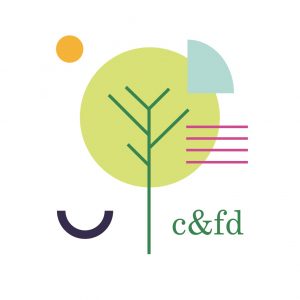By Meghan Davidson-Palmer, ChildandFamilyDevelopment.com
One of the strategies I use most frequently when working with my clients on the autism spectrum, is to incorporate visual supports.
Visual supports can be helpful for a variety of functions, including but not limited to:
– Difficulty with motor planning and sequencing for novel/multistep tasks
– Language processing differences
– Difficulty following directions
Every autistic child is unique, so this is certainly not a one-size-fits all approach. There are a wide range of visual supports and plenty of different ways to modify these supports to fit an individual child’s needs. It is important to find the right type of visual support for each child. Your therapist can help you to determine which types of visual supports would be most beneficial for your child, as well as how to incorporate these supports into daily activities and routines.

Davidson-Palmer
When a child is struggling to complete a task (or maybe avoiding or resisting it altogether) this does not necessarily mean that he or she does not have the skills needed to complete the task. It may be because he or she does not understand what he or she is expected to do. If there is no clear end point to the task, it may be difficult to get started. Often too many materials are presented at once which can be visually over-stimulating, or there are too many verbal instructions given which can be overwhelming. Here are a few strategies that can make the task seem more approachable and also make the expectations of the task more clear:
– Provide clear visual instructions so that the child knows what is expected of him or her.
– Set up materials for multistep tasks in the order in which they will be needed (e.g., for a color/cut/paste activity, lay out crayons/scissors/glue in that order.) This will help a child sequence the task more easily. You can also use a designated container to place each object in once a child has used it so he or she can see how many steps are left.
– Provide visual cues during an obstacle course such as colored dots or “go” and “stop” signs to indicate where to start/stop.
– Limit verbal instructions (this can be overwhelming and they may not be able to process everything you are saying.) Many children benefit from pairing verbal instructions with visuals.
– Decrease clutter or limit the number of materials that are presented (too much visual input can be overwhelming or distracting.)
Visual supports can also be used to help children express emotions or to request assistance, sensory support or a break from the task. Visual supports can be very helpful for children who have a difficult time transitioning between activities or from one environment to another. Talking through their daily routine ahead of time can also be helpful, but sometimes it is easier for them to process this when paired with visuals. The visual timers I use most frequently are:
– Countdown
– Little Timer
– Time Timer
Things to keep in mind:
– Even when children have strong language skills, they can still benefit from visual supports. This is especially important when they are upset or are having a difficult day. If they are feeling overwhelmed by the demands of a task and/or sensory input, it may be difficult for them to use their language skills to the best of their ability.
– There are a variety of visual supports so it is important to figure out what will work best based on the child’s communication and visual abilities. For example, some children benefit from having a physical object as a visual cue, while pictures or text (or a combination of the two) may be more appropriate for other children.
– I use some form of visual support with most of my clients so many of these strategies are also applicable to non-autistic children.
Meghan Davidson-Palmer is a Pediatric Occupational Therapist at Child and Family Development. Meghan provides occupational therapy services to children, teens and young adults with developmental, neurological and congenital impairments at the C&FD Midtown office location.
Child & Family Development

Locations:
Mitdtown:
4012 Park Road, Suite 200
Charlotte, NC 28209
704.332.4834
Pineville:
11940 Carolina Place Parkway, Suite 200
Charlotte, NC 28134
704.541.9080
Website | Facebook | Instagram | Twitter



